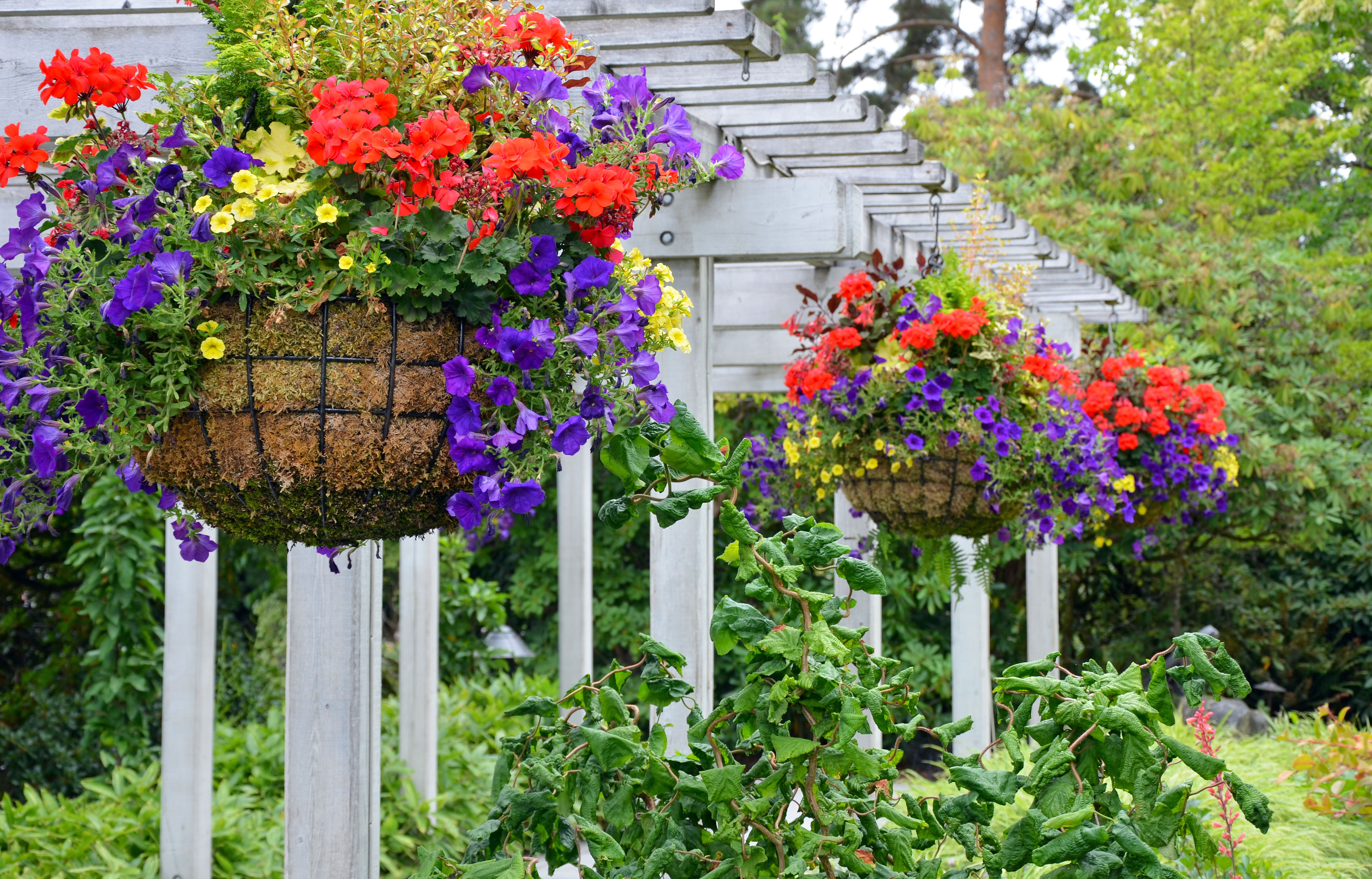The Hanging Basket: A Blooming Model for Ethical Counselling
Embracing Creativity and Care in Professional Practice
by Angie Petrie
Have you ever admired the vibrant beauty of a hanging basket, gently swaying in the breeze, its flowers cascading gracefully to brighten up a space?
For me these delightful floral arrangements, brimming with life and colour, can do more than add charm to your garden: they can inspire meaningful metaphors.
I find metaphors enhance my understanding of the way I work and some of the important aspects of professionalism in counselling and supervision.
In the world of counselling, the hanging basket serves as a captivating and insightful model for understanding ethical frameworks and nurturing practices. Let’s explore this blooming metaphor and uncover how it beautifully illustrates the essentials of professional counselling.

Building the Foundation: The Framework
Just as a hanging basket relies on a sturdy framework to keep it secure, ethical counselling begins with its foundational structure: an ethical framework. Much like the supportive strut holding the basket against the wall, this framework ensures that the practice maintains integrity and accountability. With connections to associations, governing bodies, and insurance, counselling remains anchored, protecting both counsellors and clients.
"Ethics is knowing the difference between what you have a right to do and what is right to do." - Potter Stewart
Linking Intentions to Actions: The Chain
The chain is another indispensable part of the hanging basket, representing good practice in action. It connects three essential links: the client, the therapist, and the relationship. Together, these elements ensure the counselling process is cohesive and effective, linking ethical intentions to meaningful actions.
"Good practice is the chain that links ethical intentions to ethical actions." - Unknown
The Core Agreement: The Basket
The basket itself represents the contract between the counsellor and the client. It holds the work and encourages autonomy through explicit discussion and clear contracting to support the work. It must remain level and balanced for effective counselling sessions; after all, a wonky basket leads to a wonky session, and nobody wants that!

Defining Boundaries: The Liner
Boundaries are the liner within the basket, creating a safe and structured space for growth. They are closely connected to the contracting and enable the basket to hold the soil without it being washed away. When boundaries are clearly defined and adhered to, clients feel secure within the counselling relationship, knowing where the limits lie. Not to say that the boundaries aren't revisited or re-established at any point. As rigidity doesn't make for a good liner, too ridged and the client drowns and relationship flounders.
"Boundaries are the distance at which I can love you and me simultaneously." - Prentis Hemphill
Enriching the Experience: The Soil
Much like nutrient-rich soil nurtures the plants in a hanging basket, the counselling model provides a foundation for client growth. The quality of this “soil” determines how effectively the counselling process helps clients to flourish.
To cultivate particular plants, it is essential to use the appropriate type of soil suited for those plants. For instance, some plants thrive in acidic or alkaline soils. Similarly, your model may be particularly effective for addressing addiction or trauma but may not be as suitable for children or individuals with OCD.
And don’t forget, just as a garden needs water and fertiliser, counselling thrives on ongoing learning and continued professional development (CPD). This is always needed in counselling as part of the 'soul food' (see previous blog) or self-care to support continuous care and prevention of burnout.
"Learning never exhausts the mind." - Leonardo da Vinci

A Blooming Conclusion
As the metaphor unfolds, the hanging basket reveals itself not only as a gardening delight but also as a profound illustration of ethical counselling practices. From the sturdy framework to the nourishing soil, each element plays a vital role in allowing the basket to flourish.
Not forgetting that no hanging basket is complete without the plants that thrive in it, our clients bloom within this safe and supportive environment being allowed the congruence, unconditional positive regard and empathy to find their way to grow.
And just as a well-tended hanging basket brightens up a space, ethical counselling nurtures lives, fostering growth, trust, and healing. You get to decide what the watering process is and this leads to thoughts of us as the watering can, pouring out for our clients and giving ourselves what we need to refill.
“A well-tended basket leads to a flourishing counselling garden!”
What’s Your Take?
If this model inspires you, I'd love to hear your thoughts!
How do you incorporate metaphors into your professional practice?
Would you see the hanging basket differently for your model?